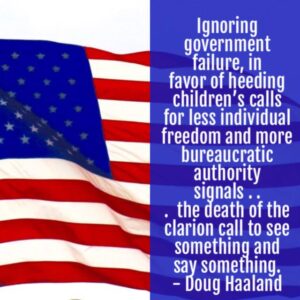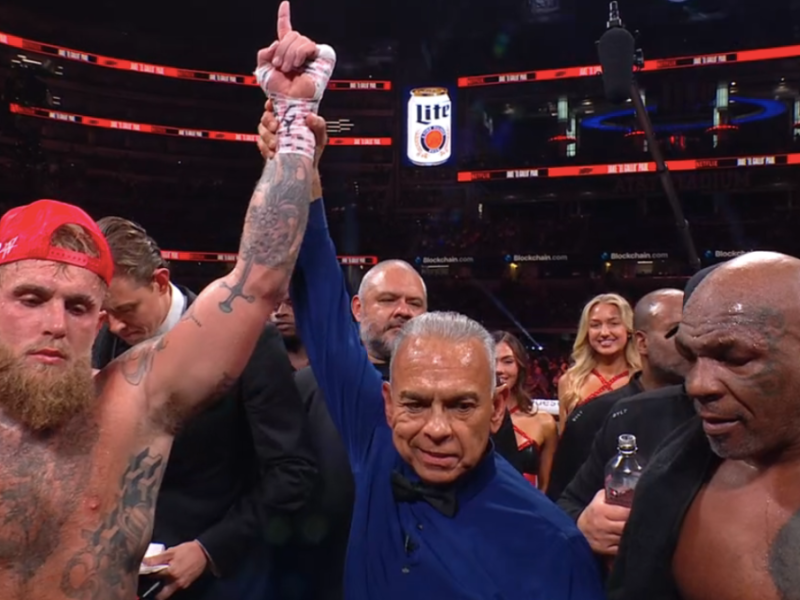The Death of “See Something, Say Something”
In the wake of 9/11, an advertising executive in Manhattan came up with the phrase “If you see something, say something!” for the Metropolitan Transit Authority. Those words have become the “Gold Standard” after acts of mass violence for law enforcement across America. The tragic significance of this for all is that government agencies aren’t ready, willing, or able to act on such information to prevent horrific tragedies.
The Parkland school shooting spawned student walkouts, a national “march”, and calls for new gun control legislation, making media “stars” of students who become “spokespersons” for talking points de jour, focused on attacking a national association of gunowners while attempting to eliminate constitutionally protected rights in the name of “school safety.”
What hasn’t been called for by students or their adult handlers is the examination of failures of government to act on information which could have prevented tragedy. In the case of Florida shooter, 19-year-old Nikolas Cruz, the “System” possessed massive amounts of information signaling serious problems and a tragedy “waiting to happen.”
The Federal Bureau of Investigation (FBI) received evidence from a YouTube user that someone with the username “nikolas cruz” was responsible for posting a message stating “I’m going to be a professional school shooter.” In January, the FBI national tip line received a direct complaint involving a death threat by Cruz but failed to forward the information to the local Florida FBI office.
A public records request by a national news agency of the Broward County Sheriff’s Office revealed that between 2008 and 2017 they responded to 45 service calls involving Cruz, his brother, or the family home. Some of these incidents should have resulted in criminal consequences.
In 2016, a peer counselor informed the Marjory Stoneman Douglas High School resource officer of Cruz’s attempted suicide and intent to buy a gun. The school is purported to have indicated they would do a “threat assessment.” Additionally, according to the Orlando Sentinel that same year the school resource officer and two of the school’s counselors said Cruz should be committed for mental evaluation.
As with many previous disasters, officials have detailed the “history” they’ve discovered and droned on about what should be done to avoid the next calamity. However, the recent Parkland massacre is just the latest example of catastrophic failure, others preceded it.
- Virginia Tech murderer, Seung-Hui Cho was ordered to seek outpatient mental health care after making suicidal comments to his roommate. Cho was recommended for involuntary commitment and a judge signed an order deeming him a danger. After his assessment, Cho was allowed to undergo “outpatient treatment,” however officials don’t know if he ever participated in the program. Finally, the then head of the English Department at the school brought Cho to the attention of the campus counseling service and campus police as a potential suicide victim. No record of follow-up has been discovered. Two years later, Cho purchased firearms and ammunition used to murder 32 students and faculty.
- James Holmes, responsible for the Aurora Colorado theater massacre had been seeing a University of Colorado psychiatrist who reportedly contacted campus police about homicidal statements made by Holmes. The university formed a “special team” of mental-health professionals, campus police and others in the wake of the Virginia Tech shootings to detect students needing monitoring. According to the university, information about Holmes mental state never reached their Behavioral Evaluation and Threat Assessment team.
- Sutherland Springs, Texas killer Devin Kelley murdered 26 and wounded 20 other parishioners of a small church in the Lone Star state. Kelley was able to purchase 4 weapons after receiving a bad-conduct discharge for the U.S. Air Force in 2014. His domestic violence court-martial conviction involving his wife and young stepson who suffered a fractured skull, should have been entered into a federally maintained database that should have flagged his inability to purchase weapons. The Air Force was “investigating” how the information failed to be included in the federal database following Kelley’s discharge.
- Maj. Nidal Hasan killed 13 people and injured another 32 during the Fort Hood, Texas massacre. Six months before Maj. Hasan committed his murderous rampage, federal authorities were aware of his Internet postings about suicide bombings and other threats. According to the L.A. Times, Hasan said jihadist suicide bombers were like a soldier that throws himself on a grenade to save his fellow soldiers. Hasan noted “sacrifices” by bombers were reflective of a “more noble cause.” ABC News reported intelligence agencies were aware before the attack that Hasan was trying to make a connection to a person associated with al Qaeda.
These events reveal governmental agencies or officials gaining information either through a system created in the wake of a tragedy or directly from people familiar with circumstances involving a future killer. Unfortunately for the victims and their families, it’s easier for the “System” to hide behind children who survived the latest attack and proclaim the answer isn’t holding them accountable.
Supreme Court Associate Justice Louis D. Brandeis once said, “The greatest dangers to liberty lurk in the insidious encroachment by men of zeal, well-meaning but without understanding.” Ignoring government failure, in favor of heeding children’s calls for less individual freedom and more bureaucratic authority signals not only the death of the clarion call to see something and say something, but embodies the encroachment by men of zeal, Justice Brandeis warned about in America.








